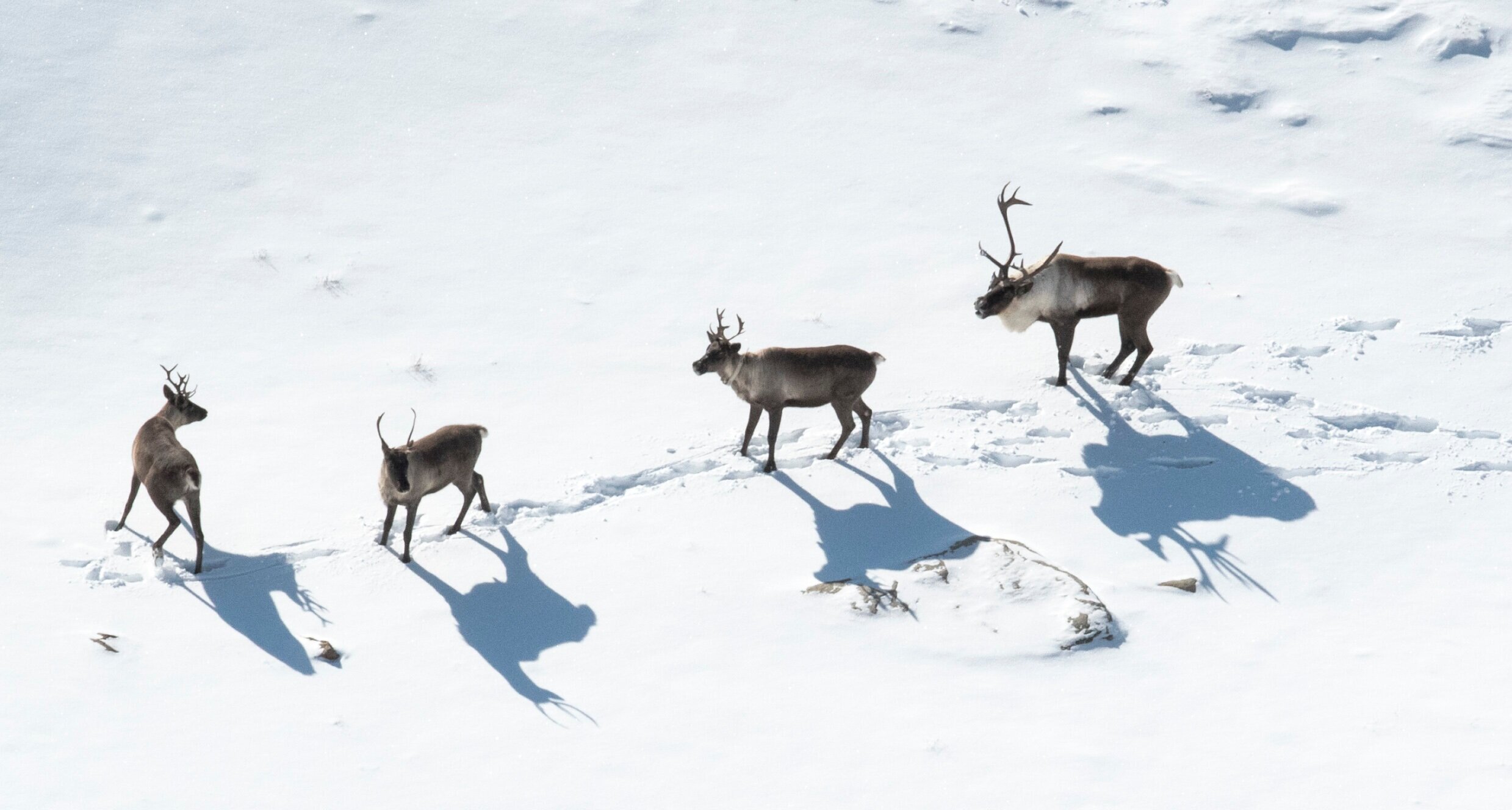
JASPER NATIONAL PARK
A conservation breeding program to support the recovery of Southern Mountain Caribou in Jasper National Park
Background
Population status
Southern Mountain caribou, the population of woodland caribou found in and around Canada’s southern Rocky Mountains, is divided into three groups: the Northern Group in west-central and north-central British Columbia (BC); the Central Group in east-central BC and west-central Alberta; and the Southern Group in southeastern BC. Southern Mountain caribou (SMC) have experienced precipitous population declines and range recession and are classified as Threatened in Schedule 1 of the Species at Risk Act. In a more recent assessment of caribou status, the Committee on the Status of Endangered Wildlife in Canada (COSEWIC) has recommended that the Central and Southern Grouping be classified on their own, and both be up-listed to Endangered.
The population of the Central Group of SMC found in Jasper National Park (JNP) in Alberta has drastically declined since the 1970s. Several herds that once contained hundreds of animals are now extirpated or non-viable. The Banff and Maligne herds were extirpated in 2009 and 2020, respectively, and both the Brazeau and Tonquin herds are non-viable. Only the À La Pêche herd remains viable, with approximately 150 animals.
The primary reason for the decline of caribou within park boundaries is an imbalance in the delicate predator-prey dynamics that results from an overabundance of both ungulates and predators. Outside of protected areas, this imbalance is created by habitat change that drives ungulate numbers upwards. However, in the case of JNP, the imbalance was created by early park management that sought to control wolves and reintroduce elk. After wolf control stopped in the late 1950s and wolf populations rebounded quickly in response to abundant elk present on the landscape, their high densities had a profound impact on sensitive caribou populations. Due to reduced elk abundance, elimination of carcass-dumping practices, and implementation of habitat management activities by Parks Canada, wolf density in JNP has been declining since the 1970s and is now below the target outlined in the 2014 federal recovery strategy. While the primary of reason for the decline of caribou populations in JNP has been corrected, caribou populations cannot recover on their own because they are too small. With less than ten adult females in each herd, each only producing one calf per year, the Brazeau and Tonquin herds cannot sustain themselves.
The 1998-2019 À la Pêche herd population estimates were extrapolated from the 2009 population estimate of 135 caribou (SARA 2014) using the annual population growth rate estimates provided by Eacker et al. (2018). The population counts displayed here are the minimum population counts.
Recovery options
In 2014, Environment and Climate Change Canada outlined a recovery strategy for SMC with the goal of:
Achieving self-sustaining populations in all Local Population Units (LPUs) in their current distribution;
Stopping the decline in both size and distribution of all LPUs;
Maintaining the current distribution within each LPU; and,
Increasing the size of all LPUs to self-sustaining levels.
The Recovery Strategy indicates that for some LPUs with small population sizes, direct population management measures (for example, maternity penning and conservation breeding) may be required to achieve recovery goals.
Project
Parks Canada has determined that conservation breeding is a feasible recovery tool for caribou in JNP. Construction of the conservation centre is underway. The goals of the program are to:
Create an assurance population against extinction for the SMC herds in JNP;
Conserve individuals from non-viable SMC herds in JNP in the short-term;
Reinforce viable SMC herds in JNP in the medium- to long-term; and,
Potentially reintroduce extirpated SMC herds in JNP once habitat suitability is restored.
Parks Canada is committed to keeping stakeholders and other conservation organizations informed on the progress of the caribou conservation breeding program. For more information, visit Park Canada’s website.
Related articles
News Articles & Press Releases
Caribou Recovery Snapshot: Fall 2023 Newsletter (Canada.ca, September 22, 2023)
Caribou Recovery Snapshot: Summer 2023 Newsletter (Canada.ca, July 6, 2023)
Construction along Geraldine Road to begin soon in Jasper National Park (Canada.ca, March 9, 2023)
Government of Canada invests in reversing biodiversity loss through conservation breeding program for caribou in Jasper National Park (Canada.ca, February 27, 2023)
Government of Canada making additional investments to support the recovery of woodland caribou in Jasper National Park (Canada.ca, August 10, 2021)
Parks Canada caribou captive breeding proposal gets OK from review panel (CBC.ca, May 9, 2021)
Caribou captive breeding program may come too late to prevent extinction in national parks (the Conservationist, Dec 3, 2020)
Parks Canada plans first captive breeding program for Jasper National Park caribou (CBC.ca, Nov 2, 2020)
Extirpation of caribou herd in Jasper National Park should trigger urgent action for remaining herds (CPAWS, Sept 9, 2020)
Emergency measures needed for Jasper’s few remaining caribou after Maligne caribou die off (AWA, Sept 9, 2020)

